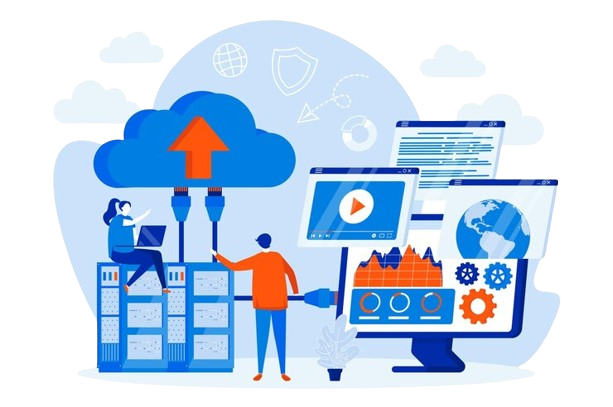Securing Software
A Case Study on Implementing ISO 27001 for a Development Company
The case study showcases the challenges faced, strategies employed, and the ultimate benefits derived from achieving ISO 27001 certification, positioning the company as a leader in secure software development.

Background
One of the rapidly Growing Software Development and product-based company in Asian region decided to enhance their Information Security Management System (ISMS) and Pursue ISO 27001:2022 certification, so that their products recognize the critical importance of information security in maintaining client trust and ensuring the Confidentiality, Integrity and Availability of sensitive data.
Our Approach
Leadership Commitments:
Leadership communicates a strong commitment to information security and allocates resources and budget for implementing ISO 27001:2022 standards.
Scope Definition:
Clearly define the scope of the ISMS, including all relevant business processes, assets and locations.
Gap Analysis:
Perform a gap analysis to identify improvement areas based on scope of the implementation

Risk Assessment:
Conduct a comprehensive risk assessment to identify and evaluate information security risks, prioritize the risk based on their impact and likelihood.
Statement of Applicability:
Implement the SOA and align the applicable controls with the business requirements.
ISMS Policy Development:
Develop an information security policy outlining the company’s commitment to security. Align the policy with ISO 27001:2022 principles and requirements.
Roles and Responsibilities:
Define Roles and Responsibilities for information security. Appoint Information Security Management Representative (ISMR) to oversee ISMS implementation.
Documented Information:
Develop necessary documented information, including information security manual, risk treatment plans and procedures.
Security Awareness Training:
Conduct Security Awareness Training for all employees to promote security conscious culture.
Access Controls:
Implement access controls to ensure that only authorized individuals have access to information and information processing facilities.
Incident Response and Reporting:
Establish and incident response and reporting mechanism. Define procedures for reporting security incidents and managing their resolution.
Monitoring and Measurement:
Implement monitoring and measurement processes to track performance indicators and security control’s effectiveness
BCP and DR Plan:
Develop the Business continuity and Disaster Recovery Plans and Test the serious as per the defined requirements.
Internal Audits:
Conduct internal audits to asses the ISMS’s conformance and effectiveness. Identify areas for improvement and correct actions.
Management Review:
Conduct regular management reviews to evaluate the ISMS’s suitability, adequacy, and effectiveness. Make informed decision for continuous improvement.

Results
Software Development company successfully achieved ISO 27001:2022 standards and adapted security best practices across the industry.
Background
Network penetration testing is conducted by Certified Ethical Hacking professionals (CEH) with the explicit permission of the organization being tested. The main focus is to identify and address security issues before malicious actors can exploit them, contributing to a proactive and robust cybersecurity posture.

Our Approach
Leadership Commitments:
Leadership communicates a strong commitment to information security and allocates resources and budget for implementing ISO 27001:2022 standards.
Scope Definition:
Clearly define the scope of the ISMS, including all relevant business processes, assets and locations.
Gap Analysis:
Perform a gap analysis to identify improvement areas based on scope of the implementation
Risk Assessment:
Conduct a comprehensive risk assessment to identify and evaluate information security risks, prioritize the risk based on their impact and likelihood.
Statement of Applicability:
Implement the SOA and align the applicable controls with the business requirements.
ISMS Policy Development:
Develop an information security policy outlining the company’s commitment to security. Align the policy with ISO 27001:2022 principles and requirements.
Roles and Responsibilities:
Define Roles and Responsibilities for information security. Appoint Information Security Management Representative (ISMR) to oversee ISMS implementation.
Documented Information:
Develop necessary documented information, including information security manual, risk treatment plans and procedures.
Security Awareness Training:
Conduct Security Awareness Training for all employees to promote security conscious culture.
Access Controls:
Implement access controls to ensure that only authorized individuals have access to information and information processing facilities.
Incident Response and Reporting:
Establish and incident response and reporting mechanism. Define procedures for reporting security incidents and managing their resolution.
Monitoring and Measurement:
Implement monitoring and measurement processes to track performance indicators and security control’s effectiveness
BCP and DR Plan:
Develop the Business continuity and Disaster Recovery Plans and Test the serious as per the defined requirements.
Internal Audits:
Conduct internal audits to asses the ISMS’s conformance and effectiveness. Identify areas for improvement and correct actions.
Management Review:
Conduct regular management reviews to evaluate the ISMS’s suitability, adequacy, and effectiveness. Make informed decision for continuous improvement.

Results
Software Development company successfully achieved ISO 27001:2022 standards and adapted security best practices across the industry.
The Network Penetration Testing exercise provided valuable insights into the security posture of this Financial Institution by addressing the identified vulnerabilities and implementing the recommended improvements. Based on these testing results, they can significantly enhance its overall security resilience and maintain the trust of its customer in the digital age.
